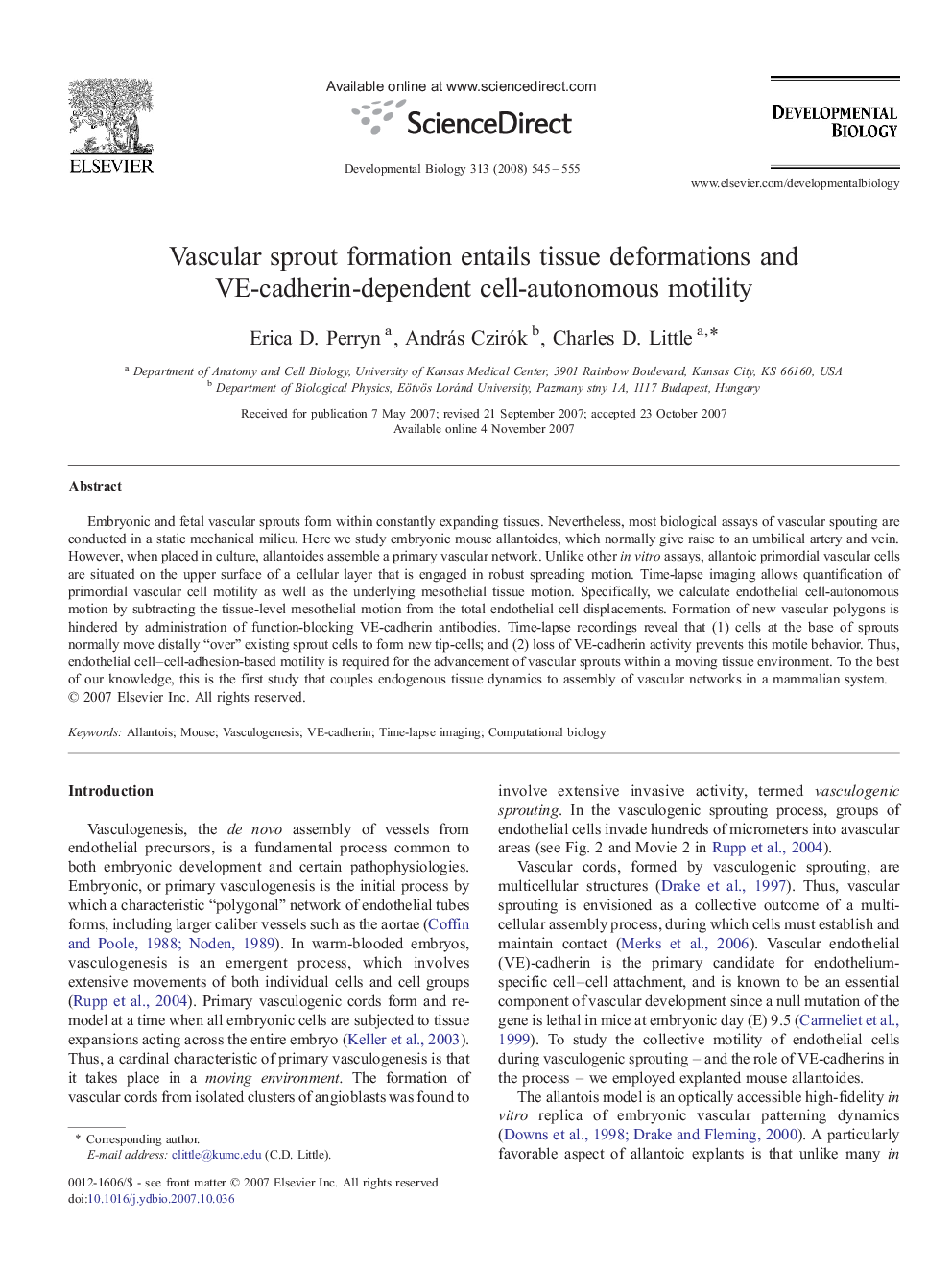| Article ID | Journal | Published Year | Pages | File Type |
|---|---|---|---|---|
| 2174792 | Developmental Biology | 2008 | 11 Pages |
Embryonic and fetal vascular sprouts form within constantly expanding tissues. Nevertheless, most biological assays of vascular spouting are conducted in a static mechanical milieu. Here we study embryonic mouse allantoides, which normally give raise to an umbilical artery and vein. However, when placed in culture, allantoides assemble a primary vascular network. Unlike other in vitro assays, allantoic primordial vascular cells are situated on the upper surface of a cellular layer that is engaged in robust spreading motion. Time-lapse imaging allows quantification of primordial vascular cell motility as well as the underlying mesothelial tissue motion. Specifically, we calculate endothelial cell-autonomous motion by subtracting the tissue-level mesothelial motion from the total endothelial cell displacements. Formation of new vascular polygons is hindered by administration of function-blocking VE-cadherin antibodies. Time-lapse recordings reveal that (1) cells at the base of sprouts normally move distally “over” existing sprout cells to form new tip-cells; and (2) loss of VE-cadherin activity prevents this motile behavior. Thus, endothelial cell–cell-adhesion-based motility is required for the advancement of vascular sprouts within a moving tissue environment. To the best of our knowledge, this is the first study that couples endogenous tissue dynamics to assembly of vascular networks in a mammalian system.
